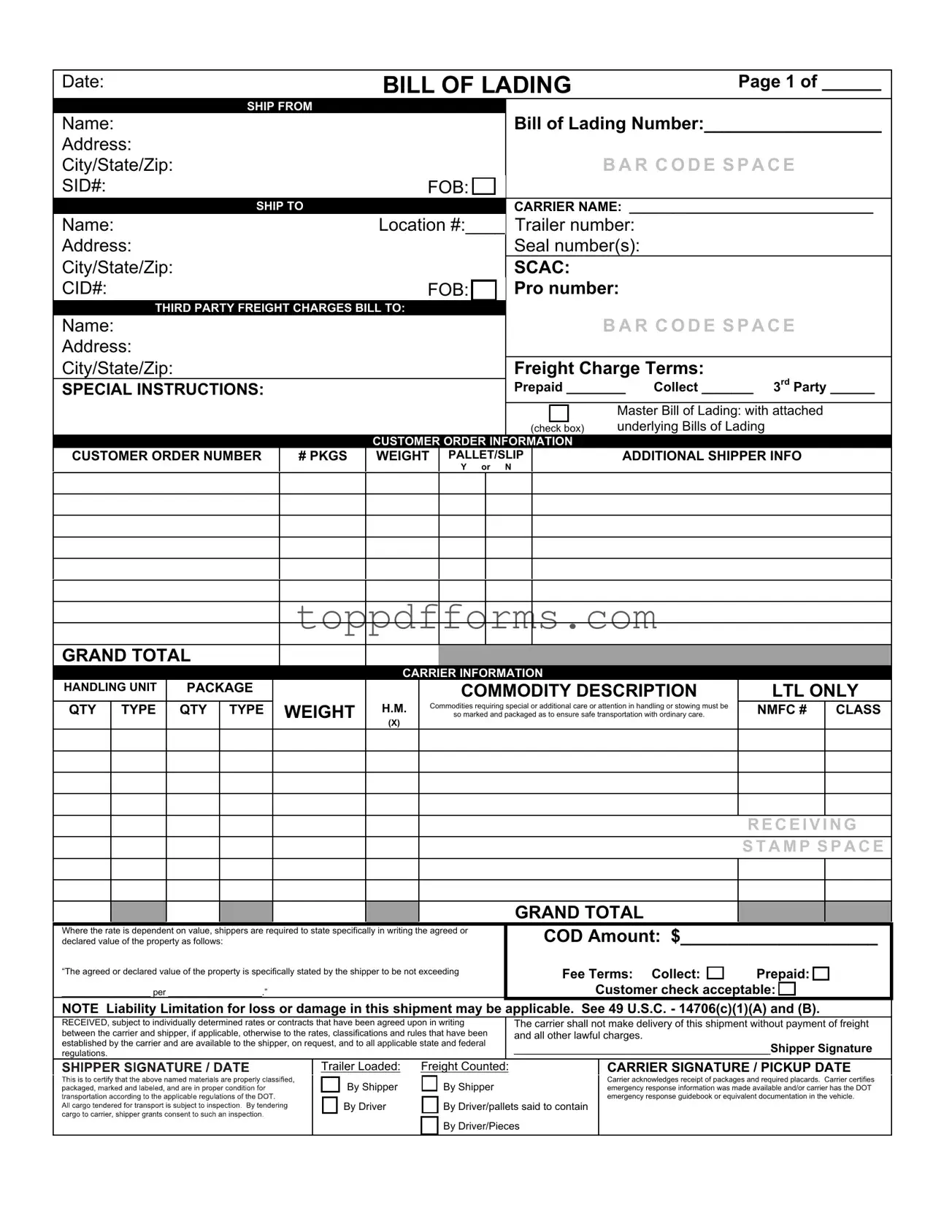What is a Bill of Lading with a Supplement form?
A Bill of Lading with a Supplement form is a document used in the shipping industry. It serves as a receipt for goods being transported and outlines the terms of the shipment. The supplement part allows for additional information or changes to be added after the initial bill of lading is issued. This can include details about the cargo, special handling instructions, or changes in the consignee’s information.
Why is a Bill of Lading important?
The Bill of Lading is crucial for several reasons. First, it acts as proof of the contract between the shipper and the carrier. It also provides evidence of the receipt of goods, protecting both parties in case of disputes. Furthermore, it serves as a document of title, which means it can be transferred to others, allowing the holder to claim the goods upon arrival.
Who needs to use a Bill of Lading with a Supplement form?
Anyone involved in the shipping process may need to use this form. This includes shippers, carriers, and consignees. If you are sending or receiving goods, having a Bill of Lading is essential. The supplement is particularly useful for those who need to make changes or add information after the initial document has been created.
How do I fill out a Bill of Lading with a Supplement form?
Filling out the form requires attention to detail. Start by entering the shipper's and consignee's information, including names and addresses. Next, describe the goods being shipped, including quantity and type. If you need to add any supplementary information, such as special instructions or changes, make sure to include that in the supplement section. Always double-check for accuracy before finalizing the document.
What should I do if there is an error on the Bill of Lading?
If you discover an error on the Bill of Lading, it is important to address it promptly. Depending on the nature of the mistake, you may need to issue a new Bill of Lading or make corrections using the supplement section. Always communicate with the carrier and consignee to ensure everyone is aware of the changes. This helps avoid confusion and potential disputes later on.
